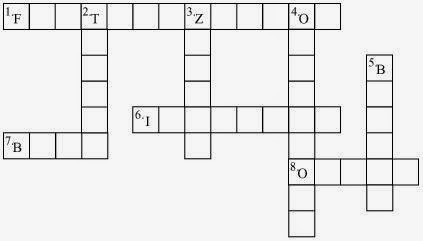Explain the importance of reproduction in organisms.
Answer
Reproduction is very important for the organisms. The organisms reproduce to produce young ones like them. It helps to carry on their generation. If reproduction does not take place, no living being will survive on the earth. Had the process of reproduction not been there then all the plants and animals would have become extinct. Secondly, special characters of an organism are carried over to its next generation through reproduction only.
Exercises
Page Number 112
Describe the process of fertilization in human beings.
Answer
Fertilization involves the fusion of the male and the female gamete. The male and the female gametes are released from the male and the female reproductive organs. Sperms or male gametes are released from the male reproductive organ i.e., the penis. These sperms then enter the female body through the vagina. Then, they travel through the fallopian tubes where they meet the eggs. Hence, the process of fertilization takes place in the fallopian tubes. During fertilization, the haploid nucleus of the sperm and that of the ovum fuse with each other to form the zygote. This zygote divides to form an embryo which in turn develops into a foetus.
Exercises
Page Number 112
Choose the most appropriate answer.
(a) Internal fertilization occurs
(i) in female body.
(ii) outside female body.
(iii) in male body.
(iv) outside male body.
(b) A tadpole develops into an adult frog by the process of
(i) fertilization
(ii) metamorphosis
(iii) embedding
(iv) budding
(c) The number of nuclei present in a zygote is
(i) none
(ii) one
(iii) two
(iv) four
Answer
(a) (i) in female body.
(b) (ii) metamorphosis
(c) (ii) one
Exercises
Page Number 112
Indicate whether the following statements are True (T) or False (F).
(a) Oviparous animals give birth to young ones. ( )
(b) Each sperm is a single cell. ( )
(c) External fertilization takes place in frogs. ( )
(d) A new human individual develops from a cell called gamete. ( )
(e) Egg laid after fertilization is made up of a single cell. ( )
(f) Amoeba reproduces by budding. ( )
(g) Fertilization is necessary even in asexual reproduction. ( )
(h) Binary fission is a method of asexual reproduction. ( )
(i) A zygote is formed as a result of fertilization. ( )
(j) An embryo is made up of a single cell. ( )
Answer
(a) False
(b) True
(c) True
(d) Flase
(e) True
(f) False
(g) False
(h) True
(i) True
(j) False
Exercises
Page Number 112
Give two differences between a zygote and a foetus.
Answer
|
Zygote
|
Foetus
|
|
It is a fertilized egg formed after the fusion of the sperm with the egg.
|
It is a stage of the embryo that shows all the main recognizable body parts of a mature organism.
|
|
The zygote divides several times to form an embryo.
|
An embryo gradually develops into a foetus.
|
Exercises
Page Number 112
Define asexual reproduction. Describe two methods of asexual reproduction in animals.
Answer
Asexual reproduction is that type of reproduction in which only single parent is involved. Asexual reproduction takes place by different methods like Budding, Binary fission etc.
→ Budding: This type of reproduction takes place in Hydra and Bacteria. A part of the organism starts bulging out. Slowly it grows and develops into a separate individual.
→ Binary fission – In this type of reproduction, a single organism gets divided into two. This type of reproduction takes place in Amoeba. The nucleus of the Amoeba gets divided into two followed by division of their bodies, each part getting one nucleus and developing into a separate individual.
Exercises
Page Number 112
In which female reproductive organ does the embryo get embedded?
Answer
The embryo gets embedded in the wall of the uterus.
Exercises
Page Number 112
What is metamorphosis? Give examples.
Answer
The transformation of the larva into adult through drastic changes is called metamorphosis. Frogs and insects are examples of organisms showing metamorphosis.
Exercises
Page Number 112
Differentiate between internal fertilization and external fertilization.
Answer
|
Internal fertilization
|
External fertilization
|
|
It involves the fusion of the male and the female gamete inside the female body.
|
It involves the fusion of the male and the female gamete outside the female body.
|
|
Chances of the survival of the offspring are more. Therefore, a small number of eggs are produced.
|
Chances of survival of the offspring are less. Therefore, a large number of eggs are produced.
|
|
Humans, cows, hens are organisms showing internal fertilization.
|
Fish, frog, starfish are organisms showing external fertilization.
|
Exercises
Page Number 112
Complete the crossword puzzle using the hints given below.
Across
1. The process of the fusion of the gametes.
6. The type of fertilization in hen.
7. The term used for bulges observed on the sides of the body of Hydra.
8. Eggs are produced here.
Down
2. Sperms are produced in these male reproductive organs.
3. Another term for the fertilized egg.
4. These animals lay eggs.
5. A type of fission in amoeba.
Answer
Across
1. FERTILIZATION
6. INTERNAL
7. BUDS
8. OVARY
Down
2. TESTIS
3. ZYGOTE
4. OVIPAROUS
5. BINARY
Exercises
Page Number 113

